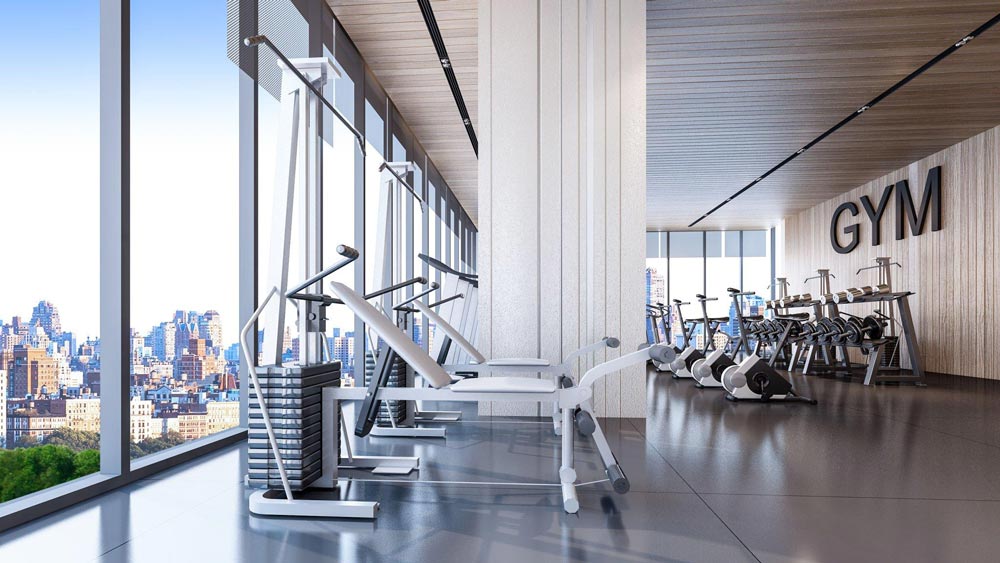Finance
The Cost Breakdown: How Much Does it Cost to Open a Gym?

How much does it cost to open a gym? The startup cost of your own gym can typically range from $10,000 to $50,000 or higher, on average but some essential factors also need to be highly considered. No doubt, it’s an exciting venture, especially in an industry that shows strong growth potential.
However, to embark on this journey successfully, it’s crucial to understand the detailed costs involved. In this comprehensive guide, we will break down the expenses associated with establishing and operating a gym, providing a deeper insight into what it truly costs to open a gym.
We will cover each step, from initial planning to the day you open your doors and beyond, while also exploring the factors that can significantly affect these costs.
Factors That Affect the Cost to Open a Gym
Before diving into the specific expenses, let’s consider the factors that play a pivotal role in determining the overall cost of opening a gym. Understanding these variables will help you make informed decisions throughout your entrepreneurial journey.
Gym Type
The type of gym you envision has a profound impact on your startup costs. Whether you plan to open a specialized facility like a basketball gym, boxing gym, climbing gym, crossfit gym, ninja gym, or a more general fitness center, your choice will dictate the equipment, space requirements, and target audience, all of which influence your financial outlay.
Location
Location is everything in the gym business. The geographical area where you decide to set up shop can significantly affect your expenses. Factors such as rent or property purchase costs, demographic suitability, accessibility, and visibility should be taken into account when choosing the right location for your gym.
Business Scale
Are you opting for an independent gym or considering a franchise? The decision between these two models has financial implications. Franchising can provide immediate name recognition and a proven business model but often involves higher initial costs and ongoing fees. On the other hand, an independent gym offers more creative freedom but demands meticulous planning to establish a brand and reputation.
You May Like it:
Pros and Cons of Owning an Anytime Fitness Franchise for 2023 (Expert Review)
Pre-opening Costs
Now that we’ve explored the factors affecting gym startup costs, let’s delve into the specific expenditures you’ll encounter during the pre-opening phase of your gym business.
1. Rent or Purchase a Space
One of the most significant upfront expenses is securing a suitable location for your gym. Whether you choose to lease or buy, the cost will vary based on factors such as location, size, and amenities. On average, you can expect to spend anywhere from $45,000 to $150,000 to acquire the space for your gym.
When selecting your gym location, consider factors such as visibility, accessibility, and proximity to your target demographic. A high-traffic area with ample parking can be a significant advantage.
2. Equipment
The heartbeat of any gym is its equipment. Your choice between leasing or purchasing gym equipment will have financial implications. Leasing offers the advantage of spreading costs over time, but buying may be more cost-effective in the long run. Depending on your preferences and space requirements, budget anywhere from $2,000 to $75,000 for equipment. Remember to account for maintenance costs, which can be around a few hundred dollars monthly.
Selecting the right equipment is crucial. It should align with your gym’s theme and cater to your target audience’s fitness needs. Regular maintenance and timely upgrades are essential to ensure a safe and appealing workout environment.
3. Legal Fees
Opening a gym involves various legalities, from lease agreements to business structure setup. Employing the services of a lawyer to navigate these legal waters is essential. Budget around $2,000 for startup legal fees, and anticipate ongoing legal expenses of approximately $5,000 per year.
Legal considerations include forming your business entity, drafting contracts for employees and members, and ensuring compliance with health and safety regulations. Legal counsel ensures you start on solid legal ground and avoid potential pitfalls.
4. Licensing & Permits
Running a gym entails complying with licensing and permitting requirements. These include a business license, trade name registration, health and safety certifications, and employer registration. Allocate about $5,000 to cover these essential fees, and remember that requirements may vary by location.
Research your local regulations thoroughly and obtain all necessary permits and licenses before opening your gym. Non-compliance can lead to fines, delays, and potential legal issues down the road.
5. Pre-Opening Advertising
Building awareness and anticipation among potential members is critical before your gym’s grand opening. Allocating a budget of $3,000 to $5,000 for your pre-opening marketing campaign will help attract your initial clientele.
Effective pre-opening advertising includes creating a website, social media presence, and promotional materials. Consider offering pre-sale memberships or special discounts to incentivize early sign-ups.
Opening Day and Beyond
Once you’ve navigated the pre-opening phase and are ready to welcome members, you’ll encounter a new set of costs associated with daily operations.
1. Staffing
Employee salaries constitute one of the most substantial ongoing expenses for your gym. Staffing requirements depend on your gym’s size and services. You may need fitness instructors, personal trainers, managers, and support staff. Salaries can range from $40,000 to $69,000 annually per employee, so plan your staffing needs carefully. Additionally, consider whether trainers should be employees or independent contractors, as this can affect compensation structures.
Staffing is critical to the success of your gym, as friendly and knowledgeable employees create a welcoming and supportive atmosphere. Providing continuous training and development opportunities for your staff is an investment in long-term success.
2. Insurance
Gyms are inherently prone to accidents and injuries, making insurance a necessity. General liability insurance and professional liability insurance are essential to protect your business and employees. Costs may vary, but budget for insurance expenses ranging from $500 to $2,000.
Insurance safeguards your gym from potential legal and financial liabilities in case of accidents or injuries on your premises. Consult with insurance professionals to determine the coverage that suits your specific needs.
3. Maintenance & Repairs
Even with leased equipment, maintenance and repairs are inevitable. Set aside $500 to $1,000 per month to cover general maintenance and potential breakdowns. For second-hand equipment, allocate an additional $25 per month for each piece of equipment.
Regular maintenance extends the lifespan of your equipment and ensures a safe and enjoyable experience for your members. Budgeting for repairs and replacements is essential to keep your gym operating smoothly.
4. Membership Fees
Membership fees are the lifeblood of your gym’s revenue. Pricing your memberships competitively while ensuring profitability is crucial. Consider the market rates in your area and factor in your expenses to determine suitable pricing structures.
Your membership packages can include various options, such as monthly, annual, or family memberships. Offering flexible and affordable choices can attract a diverse range of members and boost revenue.
5. Inventory
If your gym offers products such as supplements, apparel, or accessories, budget for inventory costs. This expense can vary widely depending on the products you choose to sell.
Inventory management is essential to ensure you have the right products in stock at the right time. Monitoring sales trends and replenishing popular items helps maximize revenue and customer satisfaction.
6. Ongoing Advertising
Maintaining a steady stream of members requires ongoing advertising efforts. Allocate around 7.5% of your monthly turnover for marketing expenses. Ensure a strong online presence through your website, social media, and other digital marketing strategies.
Regularly assess the effectiveness of your advertising campaigns and adjust your strategies as needed. Engage with your members and encourage them to refer friends and family, creating a word-of-mouth marketing network.
Frequently Asked Questions:
1. How much does it cost to open up a gym?
The cost of opening a gym can vary significantly depending on factors like location, gym type, size, and equipment. On average, you can expect startup costs ranging from $10,000 to $50,000 or more.
2. Is there any income in opening a gym?
Yes, there is potential for income in opening a gym. However, profitability depends on various factors, including your business model, membership fees, operational efficiency, and marketing strategies. With the right approach, gyms can generate a steady income.
3. How much money will I need for opening a high-class gym?
Opening a high-class gym with top-tier equipment, amenities, and services can be significantly more expensive. You may need a substantial budget ranging from $500,000 to several million dollars, depending on the level of luxury and exclusivity you aim to provide.
4. How much does it cost to open a gym in Punjab?
The cost of opening a gym in Punjab, like any other location, depends on factors specific to that area. Costs can vary widely, so it’s essential to conduct market research and consider local factors when estimating expenses.
5. How much does a gym owner make?
The income of a gym owner varies widely based on factors such as location, membership numbers, pricing, and business expenses. Gym owners can make anywhere from a modest income to a substantial profit, but success often depends on effective management and marketing.
6. How much money do I need to build an entire MMA gym?
Building a full-fledged MMA (Mixed Martial Arts) gym with specialized equipment, training areas, and qualified trainers can be a significant investment. Costs can range from $100,000 to $500,000 or more, depending on the scale and quality of your facility.
7. What do you need to know to open a gym?
To open a gym successfully, you should have knowledge of the fitness industry, business management, legal requirements, marketing, and customer service. It’s also crucial to create a detailed business plan and conduct thorough market research.
8. How much money do I need to open a multi-gym?
Opening a multi-gym with multiple locations or branches can be a substantial financial undertaking. Costs can vary widely based on the number of branches, equipment quality, and locations. Budgeting several hundred thousand dollars or more is common for multi-gym ventures.
9. How much does it cost to set up a boxing gym?
The cost of setting up a boxing gym depends on factors like location, equipment quality, and facility size. On average, you may need between $50,000 and $150,000 to establish a well-equipped boxing gym.
10. Is starting a gym a good business for the present & future?
Starting a gym can be a good business, given the increasing focus on health and fitness. However, success depends on careful planning, effective marketing, providing value to members, and adapting to industry trends.
11. How to start a gym in Canada?
Starting a gym in Canada follows a similar process to other locations but involves compliance with Canadian regulations, permits, and tax requirements. Research local regulations, create a business plan, secure financing, and consider industry-specific certifications.
12. How much money do gym businesses make?
Gym business revenue varies widely based on factors like location, membership fees, and services offered. Successful gyms can generate annual revenues ranging from $100,000 to millions of dollars.
13. How much does it cost to set up a BJJ gym?
Establishing a Brazilian Jiu-Jitsu (BJJ) gym involves costs similar to other specialized gyms. Depending on location and equipment quality, you may need approximately $50,000 to $150,000 or more to set up a BJJ gym.
Final Wrapping
So, to conclude, how much does it cost to open a gym? Typically, startup costs range from $10,000 to $50,000 or higher, on average. The dream of opening your own gym is both exhilarating and attainable. While the costs can vary widely based on your vision and location, a well-thought-out plan can make this dream a reality. From choosing the right space to investing in quality equipment, navigating legalities, and implementing effective marketing, every step plays a crucial role.
Remember, your gym isn’t just a business; it’s a community where individuals embark on their fitness journeys. By understanding and carefully managing the costs involved, you can create a thriving fitness haven that not only benefits your bottom line but also transforms lives for the better.
So, take the first step, and let your gym become a beacon of health and wellness in your community.
Citations:
Source 1: https://smallbusiness.chron.com/start-own-gym-business-4854.html
Source 2: https://gymdesk.com/blog/how-much-does-it-cost-to-open-a-gym/
Source 3: https://smallbusiness.chron.com/start-own-gym-business-4854.html


















